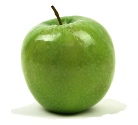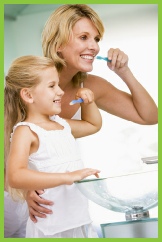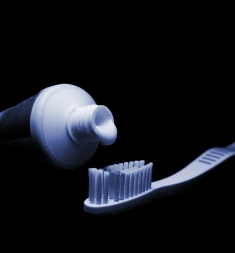



Helping you make healthy choices for you and your family


When did you last brush your teeth with rat poison?
Probably this morning!
Sodium Fluoride (NaF), a constituent of most toothpastes, has been used as the active ingredient in insecticides, wood preservatives, fungicides and rat poison. It works on rats by causing lesions in their stomachs which eventually result in the rat bleeding to death - just the thing to put in our mouths, then!
If you have children, you probably find it difficult to stop them from ingesting some of their toothpaste, especially as it has been made to be tasty to encourage brushing. But what could it be doing to their bodies?
Probably this morning!
Sodium Fluoride (NaF), a constituent of most toothpastes, has been used as the active ingredient in insecticides, wood preservatives, fungicides and rat poison. It works on rats by causing lesions in their stomachs which eventually result in the rat bleeding to death -
If you have children, you probably find it difficult to stop them from ingesting some of their toothpaste, especially as it has been made to be tasty to encourage brushing. But what could it be doing to their bodies?
Fluoride

WARNING: KEEP OUT OF REACH OF CHILDREN UNDER SIX YEARS OF AGE. IN CASE OF ACCIDENTAL OVERDOSE, SEEK PROFESSIONAL ASSISTANCE OR CONTACT A POISON CONTROL CENTER IMMEDIATELY
In 1992 a randomised double-blind study was conducted in which healthy male volunteers were given either sodium fluoride or sodium monofluorophosphate (MFP) tablets (both common ingredients in toothpaste) for seven days.
Before the trial, both sets of volunteers had their stomach linings assessed. This was repeated again at the end of the trial.
Those in the MFP group showed no significant changes but seven out of ten in the Sodium Fluoride group had significant stomach lesions, including acute haemorrhages and free blood in their stomachs. (Gastroenterology 1992; 30: 252-4)
In the US, every box of toothpaste, by law has to display the following warning:
Before the trial, both sets of volunteers had their stomach linings assessed. This was repeated again at the end of the trial.
Those in the MFP group showed no significant changes but seven out of ten in the Sodium Fluoride group had significant stomach lesions, including acute haemorrhages and free blood in their stomachs. (Gastroenterology 1992; 30: 252-
In the US, every box of toothpaste, by law has to display the following warning:
Interestingly, Proctor and Gamble, the manufacturers of a well-known brand of toothpaste, were reported to have admitted that a family size tube of their toothpaste contained enough sodium fluoride to kill a 20 to 30lb child if ingested. Do you keep your toothpaste out of your child's reach?
World renowned toxicologist, Dr Samuel Epstein states that "the use of fluoride in toothpaste is controversial because of suggestive evidence of carcinogenicity"
It seems irresponsible that governments and dentists refuse to accept the research of numerous scientists from across the world that fluoride is harmful to human health. The evidence for the effectiveness of fluoride in preventing tooth decay is also widely disputed yet the public are being denied this information. Your dentist and hygienist are probably unaware of these studies because their main sources of information come from their professional associations and journals which are heavily funded by toothpaste manufacturers.
In addition to the fluoride in toothpaste, many of us in the UK and Ireland are being exposed to this toxic substance through our water supply. Water fluoridation is very controversial and more information on this serious health issue can be found by clicking here.
World renowned toxicologist, Dr Samuel Epstein states that "the use of fluoride in toothpaste is controversial because of suggestive evidence of carcinogenicity"
It seems irresponsible that governments and dentists refuse to accept the research of numerous scientists from across the world that fluoride is harmful to human health. The evidence for the effectiveness of fluoride in
In addition to the fluoride in toothpaste, many of us in the UK and Ireland are being exposed to this toxic substance through our water supply. Water fluoridation is very controversial and more information on this serious health issue can be found by clicking here.
Is there a safe alternative to fluoride?
Stabilised Chlorine Dioxide, also known as sodium chlorite, has been used for years as a safe water treatment. It has a very high bacterial kill rate and can be used for long-term treatment and maintenance of bad breath. Sodium chlorite is not the same as chlorine, the difference being that it does not produce chlorinated by-products or carcinogens as a result of disinfecting. It can kill bacteria, spores, and viruses, fungi, cysts and protozoa, safely.
Stabilised Chlorine Dioxide is used in toothpastes and mouthwash produced by some safety-conscious manufacturers.
Another safe ingredient used in toothpastes and chewing gum is Xylitol, a natural sweetener which also has anti-bacterial properties.
Stabilised Chlorine Dioxide, also known as sodium chlorite, has been used for years as a safe water treatment. It has a very high bacterial kill rate and can be used for long-
Stabilised Chlorine Dioxide is used in toothpastes and mouthwash produced by some safety-
Another safe ingredient used in toothpastes and chewing gum is Xylitol, a natural sweetener which also has anti-
What else can you do for dental hygiene?
If you want your family to have strong, healthy teeth and gums without damaging your overall health, then there are some simple steps to take.
1) Reduce your intake of sugar, only eating sweets occasionally and preferably with other food
2) Eat plenty of fruits and vegetables, to keep up your vitamin and mineral levels. If that is a problem, nutritional supplements should be taken to prevent deficiencies that lead to gum disease.
3) Reduce the acid attack from fruit juices and never let your children go to bed with a bottle/cup of juice.
4) Ensure that you clean your teeth at least twice a day, using a non-fluoridated toothpaste which also does not contain Sodium Lauryl Sulphate.
5) Visit the dentist six-monthly for check-ups but refuse any treatments containing fluoride.
6) If you or your child needs a filling, refuse to allow mercury amalgam to be used. Instead ask for a composite resin (not glass iomer) as this contains no toxic material. This advice is the same if you ever need a replacement filling.
If you want your family to have strong, healthy teeth and gums without damaging your overall health, then there are some simple steps to take.
1) Reduce your intake of sugar, only eating sweets occasionally and preferably with other food
2) Eat plenty of fruits and vegetables, to keep up your vitamin and mineral levels. If that is a problem, nutritional supplements should be taken to prevent deficiencies that lead to gum disease.
3) Reduce the acid attack from fruit juices and never let your children go to bed with a bottle/cup of juice.
4) Ensure that you clean your teeth at least twice a day, using a non-
5) Visit the dentist six-
6) If you or your child needs a filling, refuse to allow mercury amalgam to be used. Instead ask for a composite resin (not glass iomer) as this contains no toxic material. This advice is the same if you ever need a replacement filling.
Other Sources of Fluoride
Fluoride is a compound, made up of fluorine with other elements, such as calcium (calcium fluoride) or sodium (sodium fluoride). The form usually used for artificially fluoridating water is Hydrofluorosilicic acid (H2SiF6) which combines fluorine and hydrogen with silicon.
We can be exposed to fluorides in many different ways on a regular basis, which is why we believe caution is necessary to avoid over-exposure that may lead to fluoride poisoning (fluorosis). According to the National Academy of Science (US), the daily intake of fluoride should not exceed 4mg for adults; 3mg for pregnant/breastfeeding women; 2.5mg for children aged 7 - 10; and 1.5mg for children up to seven years.
Our exposure can come from the following:
Fluoride is a compound, made up of fluorine with other elements, such as calcium (calcium fluoride) or sodium (sodium fluoride). The form usually used for artificially fluoridating water is Hydrofluorosilicic acid (H2SiF6) which combines fluorine and hydrogen with silicon.
We can be exposed to fluorides in many different ways on a regular basis, which is why we believe caution is necessary to avoid over-
Our exposure can come from the following:
|
|
Tap water -
|
|
|
Bottled Water/Mineral water -
|
|
|
Tea -
|
|
|
Processed Food and Drink -
|
|
|
Wine and Beer -
|
|
|
Non-
|
|
|
Drugs and Anaesthetics -
|
|
|
Pesticides -
|
|
|
Cigarettes -
|
If you wish to reduce your exposure to fluoride, then you need to avoid as many of the above as possible -
For information about Water Fluoridation, click here
Articles about Fluoride
Click on the following links
Article on the Link Between Fluoride and Cancer
Why is There a Poison Warning on Toothpaste in US (Fluoride Action Network)
The Stop Cancer Book by Dr. Samuel Epstein of the Cancer Prevention Coalition
Article on the link with Fluoride and Irritable Bowel Syndrome. Includes a compelling testimonial of how one man became symptom free
For more information, see our recommended list of books by clicking here
Click on the following links
Article on the Link Between Fluoride and Cancer
Why is There a Poison Warning on Toothpaste in US (Fluoride Action Network)
The Stop Cancer Book by Dr. Samuel Epstein of the Cancer Prevention Coalition
Article on the link with Fluoride and Irritable Bowel Syndrome. Includes a compelling testimonial of how one man became symptom free
For more information, see our recommended list of books by clicking here
Click on the calculator to find out how many chemical exposures you receive each week, month and year

It makes you realise just how toxic toothpaste must be if such a small amount swallowed requires urgent medical attention. This puts a lot of responsibility on the parent to supervise toothbrushing. The question is: If the same formula is used in our toothpaste as is used in the US, why do our governments not issue the same warning? Has your dentist or hygienist ever warned you of the dangers, not only to your children but to yourself, too? Probably not.
What is Sodium Fluoride?
Sodium Fluoride is a hazardous waste by-product from the aluminium smelting process. It can also be derived from the pollution scrubbers of the phosphate fertiliser industry. This by-product is too toxic to be dumped in the environment and it is classified as a poison. It is found in toothpastes in concentrations of up to 1500 parts per million (ppm).
What is Sodium Fluoride?
Sodium Fluoride is a hazardous waste by-
In 1998, Dr A K Susheela (see right) of the India Institute of Medical Sciences in New Delhi, presented a report of her research entitled "Scientific Evidence On Adverse Effects Of Fluoride" to MPs in Westminster. She discovered that "fluoride from these toothpastes enters the circulation within minutes". As fluoride is more toxic than lead and slightly less toxic than arsenic, that is a worrying find.
To watch an interview with Dr Susheela on her work in India diagnosing and treating patients with fluoride poisoning, click on her photo, opposite.
Videos about the Dangers of Fluoride
Click here to videos on fluoride


| Your Health Your Future |
| Controversial Ingredients |
| Nutritional State |
| Parent and Child |
| Microwave Ovens |
| Recommended Books |
| Skin Absorption |
| Sodium Lauryl Sulphate |
| Propylene Glycol |
| DEA, MEA, TEA |
| Chemical Calculator |
| Fluoride |
| Aspartame |
| Fluoridation |
| Water Filtration |
| Planning a Pregnancy |
| Pregnancy Care |
| Post Pregnancy Care |
| Amazon Books |
| EBooks |
| About Us |
| Health Services |
